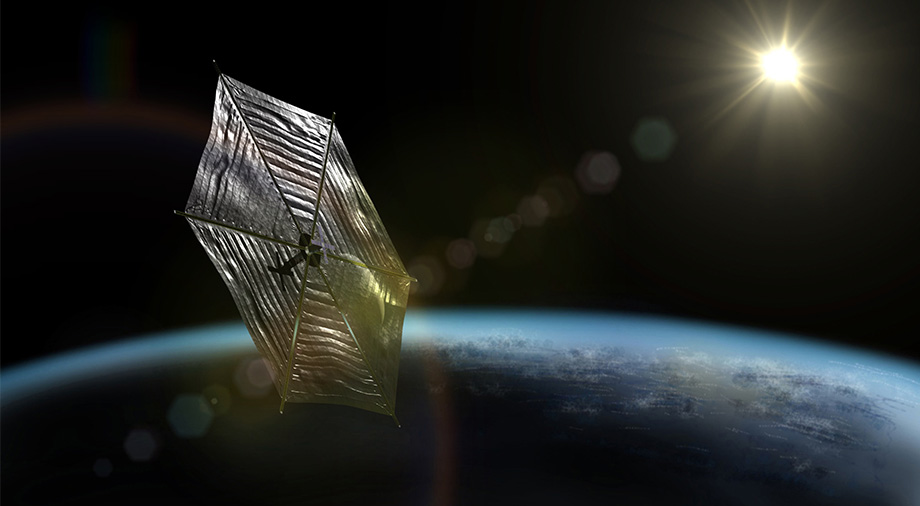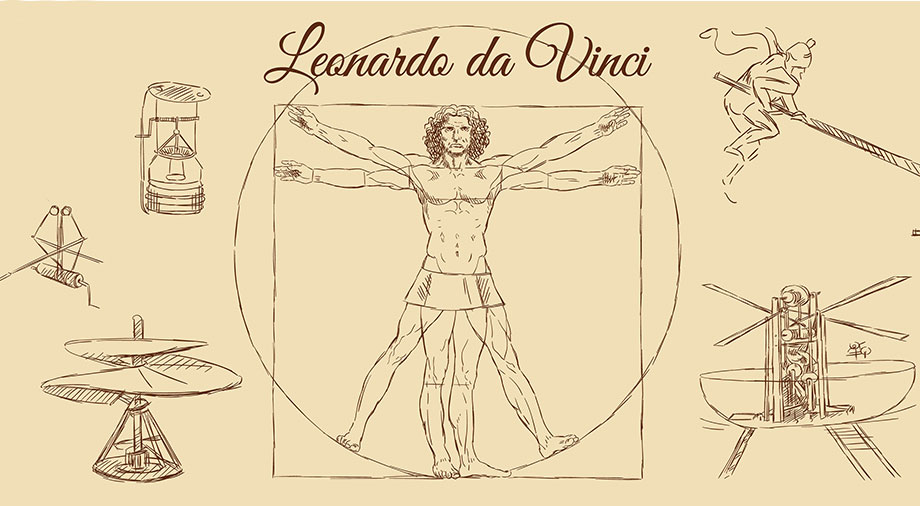Over 5,000 years ago, the invention of the sail in ancient Egypt completely changed navigation history. The wind power, which propelled the first sailing vessels, enabled ancient sailors to make long sea passages that had never been possible earlier. At the dawn of the space age, it was decided to resort to sail technology again, this time for the organization of orbital and, in the long term, interstellar motion.
Basic principles of photon acceleration
The principle of the solar sail (also called photon sail) is based on the propagation of sunlight in space. As we know, light consists of photons that have no weight. However, as they move through space, photons carry momentum. This photon impulse is transmitted to the reflecting surface of the solar sail when light hits it.
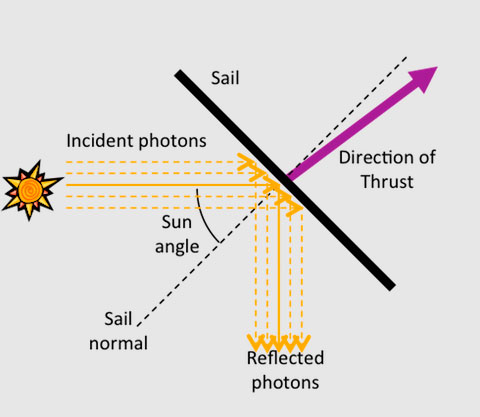
source: images.theconversation.com
The impulse carried by the photons is relatively weak, but the conditions of the environment in which the solar sail moves help it. The space vacuum has zero resistance, so even a weak light force can provide the spacecraft with the desired acceleration vector. In addition, the acceleration of a spacecraft equipped with a solar sail will continuously increase as it is affected by sunlight. This means that spacecraft equipped with a solar sail can achieve speeds beyond the reach of today’s chemical-fueled rocket technology while using a completely renewable energy source for their purposes.
It is worth noting that solar sails do not move only in a straight line, just along the path of sunlight. They can change the spacecraft’s direction by modifying the sail’s angle or shifting the center of the spacecraft’s mass. An active attitude control system (ACS), located on the spacecraft and assists with slowly correcting the tilt of the solar sail based on its orbital trajectory, is responsible for this process. The ACS must provide zero net torque to keep the spacecraft in a stable position.
Apart from the ACS, the change of the spacecraft position can be achieved if the solar sail is made in the form of rotating blades (such as the experimental model, Znamya-2, which experimented on the reflection of concentrated solar radiation on Earth).
Design features of solar sails
A solar sail must be made of ultralight materials to ensure proper acceleration. By far, the best solutions are solar sails made of mylar (BoPET from Biaxially-oriented polyethylene terephthalate) and polyimide (PI). It is also important to apply a reflective coating often made of aluminum to these materials. It will prevent photons from passing through the sail, as this process can cause the spacecraft to lose its acceleration.
Another parameter directly affecting the speed a solar sail can develop is the size and thickness of the reflective coating. There is no minimum limit here, but the smaller the coverage area of the sail, the more time it will take to develop the speeds required for space travel. A properly adjusted ratio of spacecraft mass to the area of its solar sail matters too. Therefore, to achieve optimal characteristics of the speed a photon sail can develop, engineers either increase the area of its reflecting surface or try to reduce the weight of the spacecraft to which it will be attached.
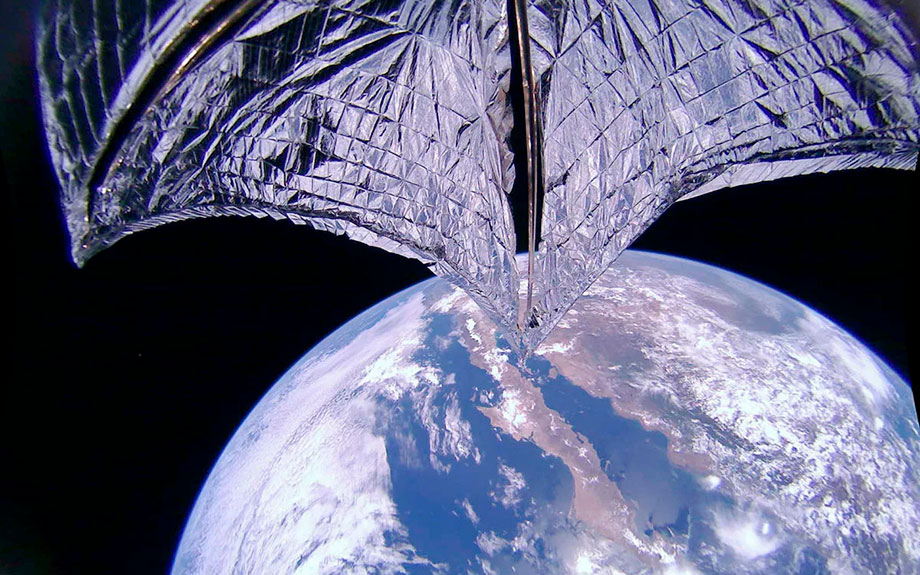
source: planetary.s3.amazonaws.com
The acceleration of a spacecraft equipped with a photon sail also depends on the intensity of the sun’s light emission. In the inner boundaries of the solar system (up to the orbital trajectory of Jupiter), sunlight will be sufficient for the vehicle to develop its acceleration in a relatively short period. Still, the further away our star is, the greater loss of acceleration will be noticed.
This problem can be solved by hybrid solutions, namely by having a laser installation that could generate a powerful laser beam and direct it to the reflecting surface of the sail. The availability of such a laser setup can guarantee a spacecraft to maintain its acceleration in case of a solar radiation intensity decrease, but, currently, this technology is still difficult to implement. Such laser installations could significantly expand the scope of the application of solar sails. They would even allow spacecraft with photonic sails to be guided to the nearest stars from the Sun in the future.
From idea to first attempt at implementation
The concept of moving objects through the solar wind’s force was first formulated by Johannes Kepler in his letter to Galileo Galilei, dated 1610. In particular, Kepler wrote to his colleague, “Provide ships or sails adapted to the heavenly breezes, and there will be some who will brave even that void.” Later, James Maxwell, who proved that light has momentum that can exert pressure on objects by his equations, indirectly confirmed the possibility of a solar sail in the future.
The first tech analysis of the possibility of solar navigation was formulated by the Baltic German Georg Zander. In his 1925 work titled “Problems of Jet Propelled Flight: Interplanetary Flights,” the scientist considered the possibility of technically implementing solar sails that could reflect the sunlight using a system of ultrathin mirrors.
However, more than 50 years passed before humanity started the first attempts to implement the idea of moving with the help of sunlight. In 1976, the American company Jet Propulsion Laboratory (JPL) began to develop this idea. The idea of JPL was more than ambitious – a probe equipped with a solar sail with the dimensions 850×850 m had to go to Halley’s comet and approach it in March 1986. After approaching, the spacecraft was supposed to detach its sails and use its jet engines to land on Halley’s comet.
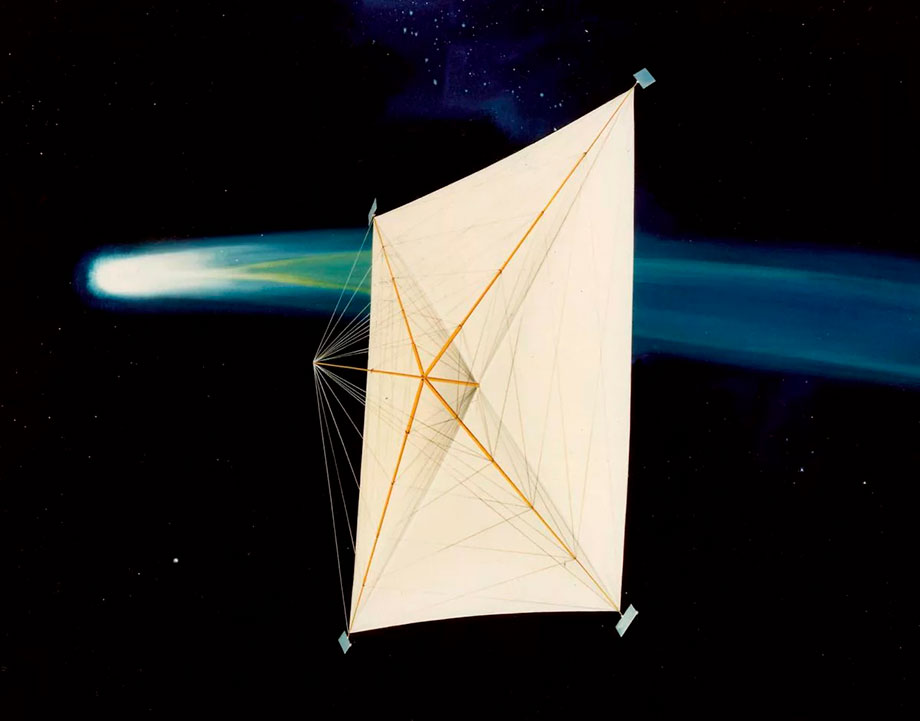
source: www.planetary.org
As an alternative to the giant solar sail, JPL considered another option – a solar sail in the shape of 12 blades, which was named heliogyro. Each of the 12 blades of the heliogyro was to reach 8 m in width and 6.2 km in length. The total reflective coverage area of the solar sail developed by JPL was to be 0.6 million sq. m. A full rotation of the blades was to be carried out every three minutes. It was this solution that JPL specialists settled on in 1977, after which painstaking work began on the implementation of the first working prototypes.
Unfortunately, when the first blueprints for a working heliogyro were already on the table, NASA began to experience severe funding problems. As a result of budget cuts, on the one hand, and a rush to meet the project deadline, on the other hand, the solar sail was replaced by a SEP rocket engine, which created thrust through the separation of electrons from the inert xenon gas. However, the lack of funding did it all, and the NASA shuttle, which was to take the spacecraft to meet with the comet, did not start at the appointed time. Thus, the dreams of the first working prototype spacecraft, driven by sunlight, could not come true until 2010.
The massive IKAROS and the ultralight Light Sail
The first working prototype of a solar sail appeared in Japan. JAXA (Japan Aerospace Exploration Agency) was responsible for its development. The sail was mounted on the IKAROS (Interplanetary Kite-craft Accelerated by Radiation Of the Sun) spacecraft launched in May 2010 aboard the Japanese H-2 rocket. After undocking its launch vehicle, it successfully deployed its reflective web on June 14 that year.
The IKAROS solar sail was only 7.5 µm thick, and the coating was made of a polyamide film. To release its 14x14m sail, IKAROS used innovative spinning technology and, with a speed of 20-25 revolutions per minute, slowly released the canvas sail thanks to four weighted tips. During this procedure, the sail took on a cruciform shape, and then spread the membrane of its reflective web like a cosmic kite. By July 2010, the first photons began to arrive at the solar sail, causing it to gradually gain acceleration and reach its maximum speed of 1,410 km/h.
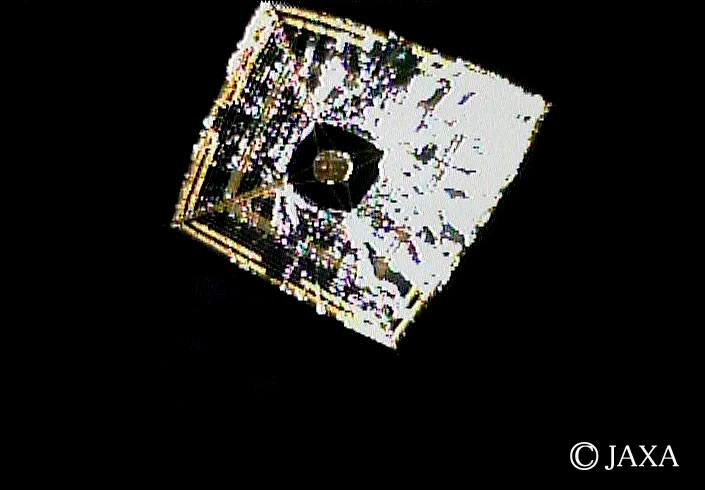
source: cdn.mos.cms.futurecdn.net
The IKAROS photon sail also had a set of solar panels to store solar energy to provide autonomous operation of the space probe’s radio and telemetry systems. Japanese specialists carried out a number of operations to control spacecraft orientation during the IKAROS mission. In particular, JAXA engineers discovered that they could control the orientation of the spacecraft using a system of liquid crystal panels mounted on the sail’s edges.
Space tests of the first working version of the IKAROS solar sail came to an end in December 2010, marking the beginning of a new era of space satellites and cubesats driven by the power of sunlight. One of the major successes was achieved by the Planetary Society, which launched the first cubesat equipped with the LightSail solar sail to demonstrate the possibility of launching photon-powered nanosatellites into Earth orbit back in 2015.
LightSail was 60 times lighter than IKAROS (5 kg versus 315 kg), but its solar sail was only six times smaller. Due to its low mass, LightSail’s initial flight speed was only 0.058 mm/s², but over a month of constant exposure to sunlight, the cumulative acceleration effect increased, enhancing LightSail’s flight speed to 549 km/h.
In 2019, the Planetary Society repeated their experiment, launching a second version of the solar sail called LightSail 2. The Solar Sail Cubesat was launched on June 25, 2019, using SpaceX’s Falcon Heavy super heavy launch vehicle as part of the STP-2 program. As early as July 23, the vehicle was able to deploy its sail successfully, and a day later, it managed to send the first photos from its onboard cameras to Earth (shown above).
LightSail 2 was virtually identical to 1, except for a few differences compared to an earlier version of the vehicle. For example, LightSail 2 was designed to fly on a higher orbital trajectory. It was equipped with an inertia wheel, which helped the apparatus make 90° turns and complete rotations around its axis to gain acceleration from sunlight and increase its orbital altitude with each revolution around the Earth. In addition, the software for LightSail 2 control and spatial orientation was improved.
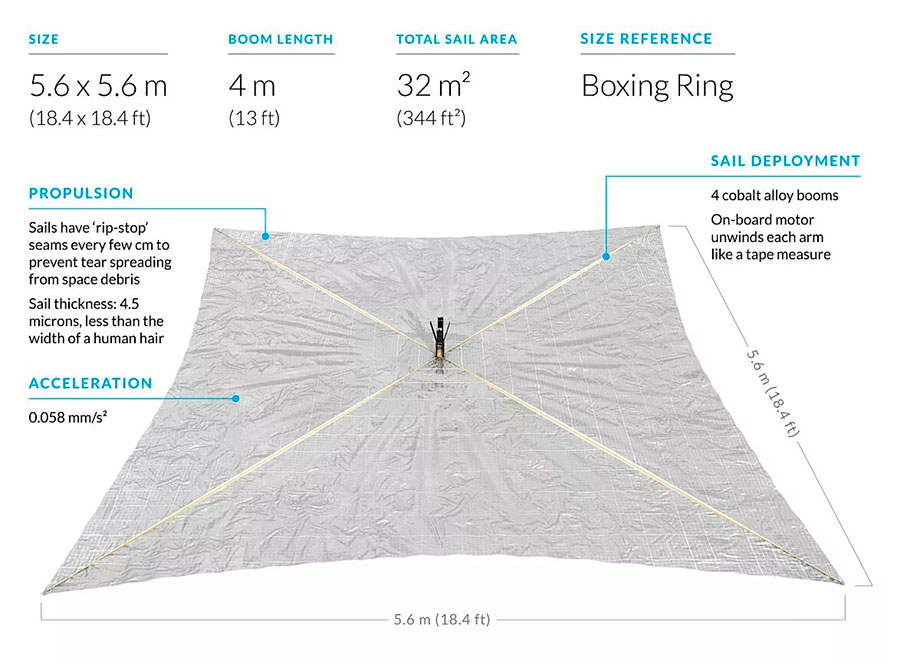
source: planetary.s3.amazonaws.com
The launches of LightSail 1 and later LightSail 2 demonstrated that it was possible to use sunlight to maneuver microsatellite orbital constellations (cubesats) without resorting to rocket engines and propellants, but only to rely on photon physics.
Technology has given several new opportunities to control cubesats, with which the scope of their application has significantly expanded. It is assumed that these spacecraft will be used for monitoring missions to study the Sun and its activity in the future. The possibility of launching satellites into unstable orbits for rocket engines will open the way to new approaches to studying the Earth’s polar poles.
Advantages, disadvantages, and the future of the technology
The main advantage of solar sails is the absence of a rocket propulsion system and its fuel supply. This mass can be replaced with other payloads (research equipment, air, and provisions for astronauts). The presence of a constant light source driving the solar sail creates a balancing force, due to which vehicles equipped with photonic sails can reach orbits unstable for conventional rocket technology, which means a broader range of applications for such spacecraft.
Along with its undeniable benefits, solar sail technology also has its drawbacks. The main pitfall is the high vulnerability of the solar sail to small meteorites, which can damage the ultra-thin fabric of the reflective material. However, even in this case, engineering solutions to minimize the adverse impact of possible collisions exist. For example, most modern solar sails are reinforced with carbon fiber, which helps maintain the integrity of the reflective fabric in the case of a collision with space visitors.
The future of solar sail technology today is more like a sci-fi movie plot, but the development of ultrafast nanosatellites equipped with solar sails is more than real. In 2016, the Breakthrough Initiatives group announced the launch of a crowdfunding platform with the main goal to investigate the possibility of launching a 1-g nanosatellite driven by a photonic sail and a laser system to the nearest star system, Alpha Centauri, which would be able to maintain its acceleration as it moves away from the Sun.
It is assumed that a nano-satellite equipped with such an engine will be able to develop up to 20% of light speed (≈60 000 km/s) and reach the nearest star to the Sun in around 20 years (for comparison, the star is 4.367 light years from the Sun, and it would take ≈6300 years to reach it with today’s fuel-powered engines). Now, this engineering task looks monumental because currently, the maximum speed that a spacecraft with solar sails can develop is ≈0.05% of the speed of light (with a spacecraft weight of 10 kg and a total reflecting sail coverage area of 1 sq. km). Nevertheless, to definitively confirm (or refute) the hypotheses put forward by Breakthrough Initiatives, several theoretical and experimental studies should be carried out first.
Regardless of whether Breakthrough Initiatives’ ambition translates into reality, the photon sail has already given rise to the development of a new generation of rocket engines. The principle of photon momentum transfer, on which it is based, already forms the basis for the photonic engines and rockets under development. The speed of light offers humanity a unique opportunity for ultrafast interstellar travel in the future, and today the solar sail stands at the origin of these fundamental discoveries.

